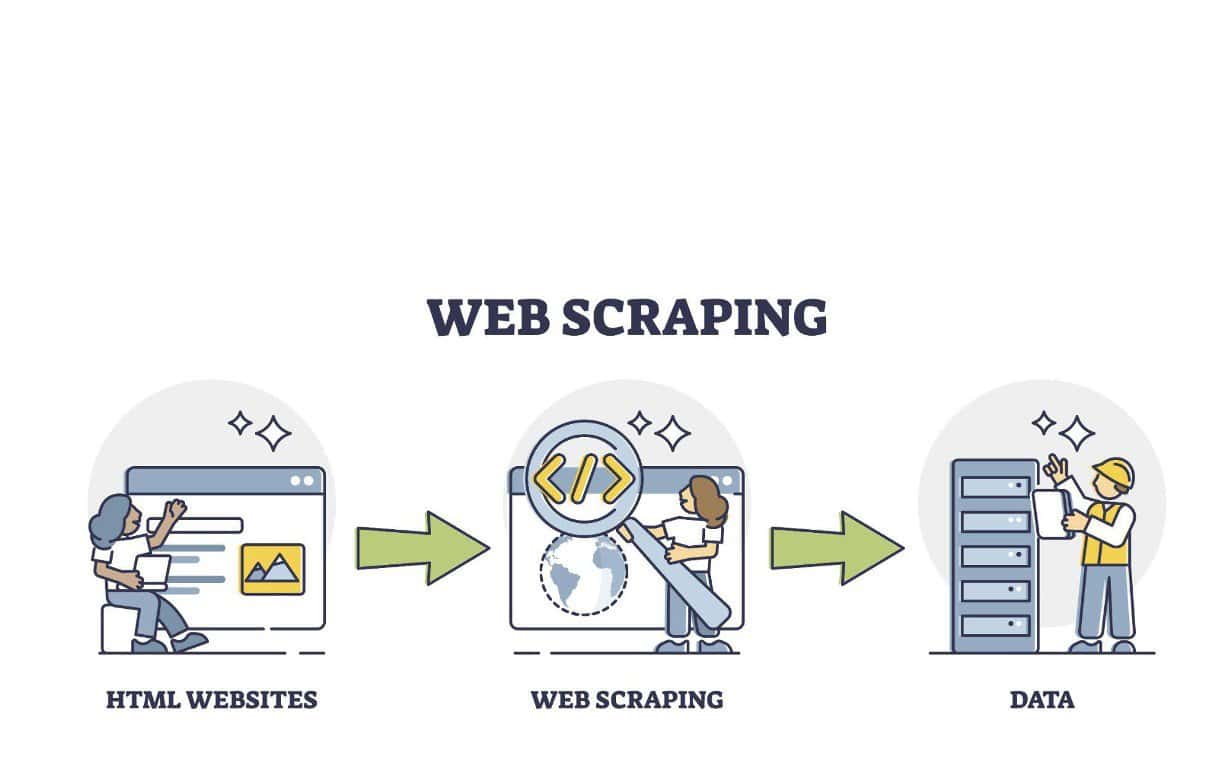
22 Mar Overcoming JavaScript-Rendered Content in Web Scraping
When it comes to extracting data from online sources, there’s no better tool than a web scraper. A web unblocker might get you access to restricted content, but it is a web scraper that saves you the time and effort of manually copying data.
However, there are difficulties that arise when using a web scraper, such as when trying to scrape JavaScript-rendered content. Websites employ JavaScript to load and display their content dynamically. Web scrapers, however, also require JavaScript-rendering capabilities to scrape dynamic content, contrary to static HTML content.
The consequence of such data rendering for data collection is that the web scraper used needs to adapt to the change in data structure on the page. In this article, we will cover what JavaScript-rendered content is, why it is challenging for web scrapers, and strategies for dealing with such content.
 What is JavaScript-rendered Content?
What is JavaScript-rendered Content?
Rendering, as regards a webpage, refers to the process that turns the code on a website into the web pages that users can interact with. More specifically, JavaScript rendering is the process by which JavaScript code makes changes to the loaded HTML code, thus altering some elements of the webpage and the data as well.
The major difference between the initially loaded HTML and the JavaScript-rendered webpage is simple to grasp. Where the HTML is static and fully present within the page source, Javascript-rendered content is loaded on the go by the website. The website renders the page in accordance with certain factors, such as previous user interactions and external data sources.
Examples of such JavaScript-rendered pages are interactive maps, social media feed pages, etc. The JavaScript rendering may or may not require the use of a framework, and they generally follow three methods or ideologies: Client-side rendering, server-side rendering, and static site generation.
Why is Javascript-rendered Content Challenging in Web Scraping?
Web scrapers find it challenging to scrape JavaScript-rendered content for the following reasons:
- The Initial Page Source: Conventional HTTP request scrapers collect their data from the HTML content of the initial page source. However, because that source lacks the JavaScript rendered content, essential information might be missing from the extracted data. Adept online data collectors and analysts use scrapers and tools that can collect JavaScript content rather than risk losing valuable data.
- Asynchronous Loading: with JavaScript rendering, not all of the data on a webpage loads at the same time. This is so because JavaScript may often load content or data from some external sources after loading a page. Such loading patterns might affect the integrity of the data or the speed of collection. Negative effects of asynchronous loading are avoidable by simply waiting for a website to load completely before commencing scraping.
- Infinite Scrolling: The dynamic loading of JavaScript-rendered content helps to facilitate infinite scrolling. Infinite scrolling is where web pages automatically load new content as a user scrolls down the site. A scraper collecting data from such a website must trigger the scrolling actions, and that might be tricky to achieve. Emulating user interactions, such as scrolling or clicking, can help trigger the loading of pages.
- Browser-Based Execution: Arguably, the biggest challenge to the use of JavaScript-rendered content is that they are only accessible using a web browser. Since many websites can detect whether visitors can execute JavaScript or not, the inability to do so might indicate bot activity and trigger IP bans. The solution for analysts looking to collect dynamic data is to use headless browsers. Headless browsers work just like normal browsers but without a user interface. For this reason, it runs much faster than a typical browser would.
The most straightforward solution, though, is to use a web-unblocking tool or proxy service. A reliable tool like Oxylabs’ Web Unblocker runs requests through proxies, renders dynamic content, and quickly returns fully rendered HTML pages, among other capabilities.
Pro tip: Check whether your desired websites provide APIs to help users programmatically access their data.
 Conclusion
Conclusion
HTML code is important in web structure, but JavaScript is essential for a great user experience. JavaScript is useful for many of the interactive features that many webpage visitors praise, like animations, zooming, on-page audio and video players, etc. As such, it is not always a deliberate attempt to foil web scrapers. Unfortunately, that’s what it sometimes does.
JavaScript rendering complicates the scraping process. In contrast to static HTML webpages, their dynamic pages are difficult to configure scrapers for. However, few problems exist without solutions. When you use the right web unblocking solution and other tools or strategies, your web scraper can successfully extract JavaScript pages.
Businesses looking to collect data without limitations must invest in the best tools. A web unblocker capable of handling JavaScript-rendered pages is one such tool, and there is no reason you should not be buying one.



No Comments